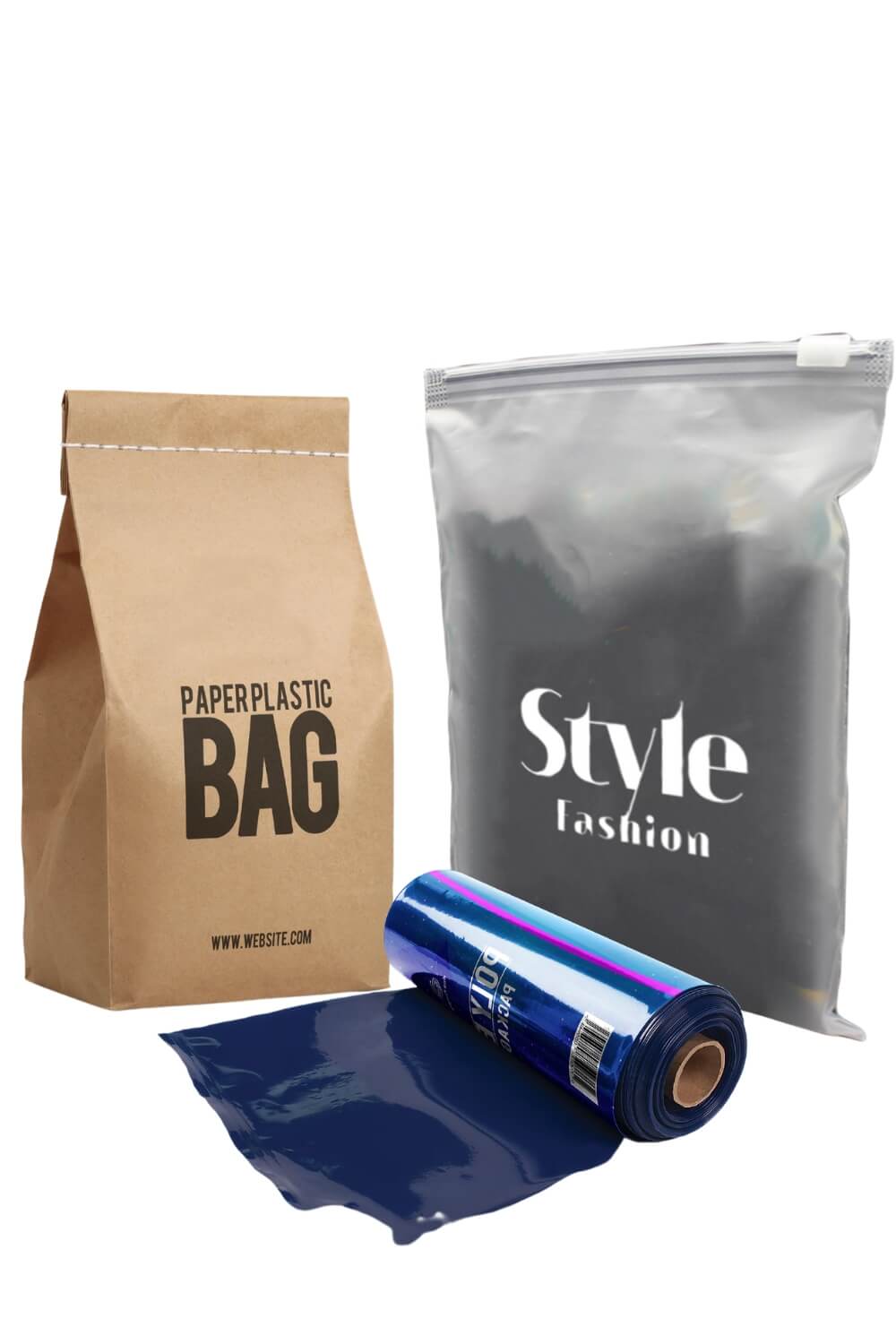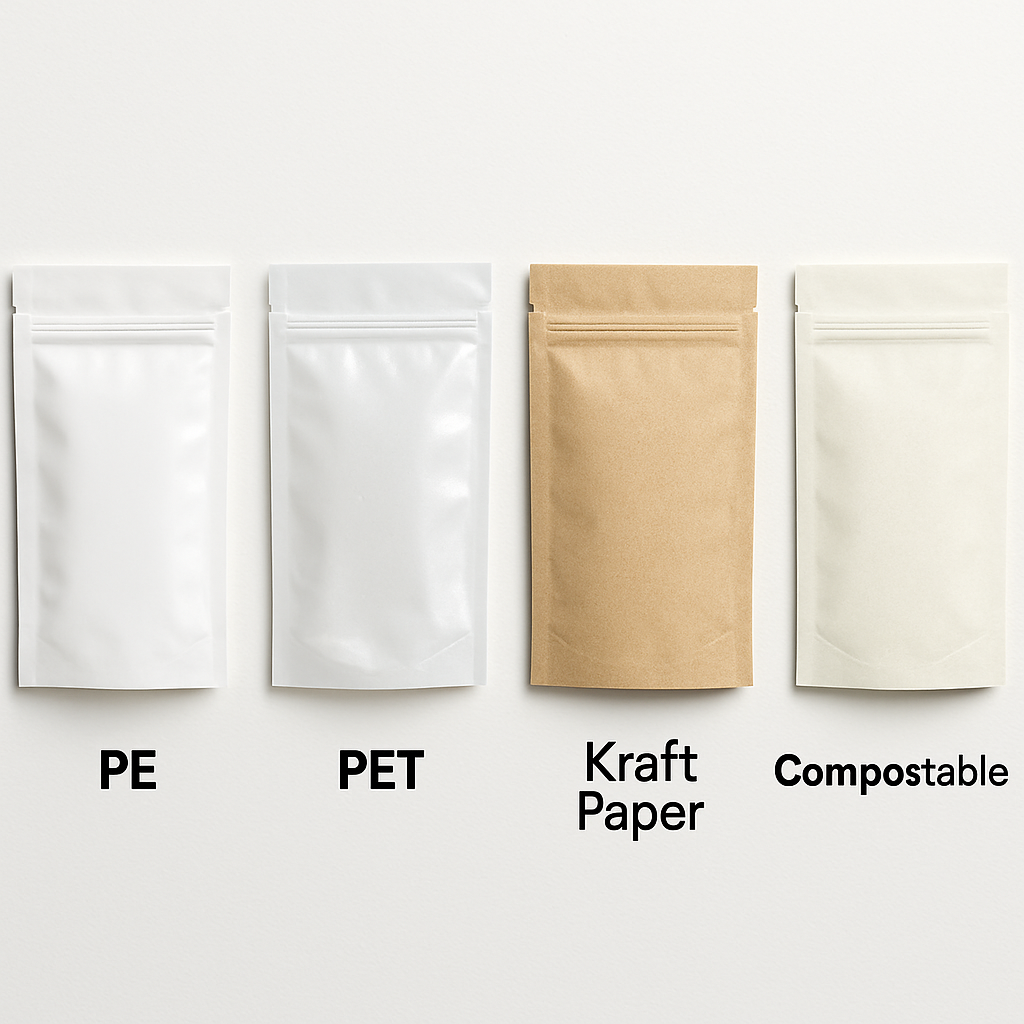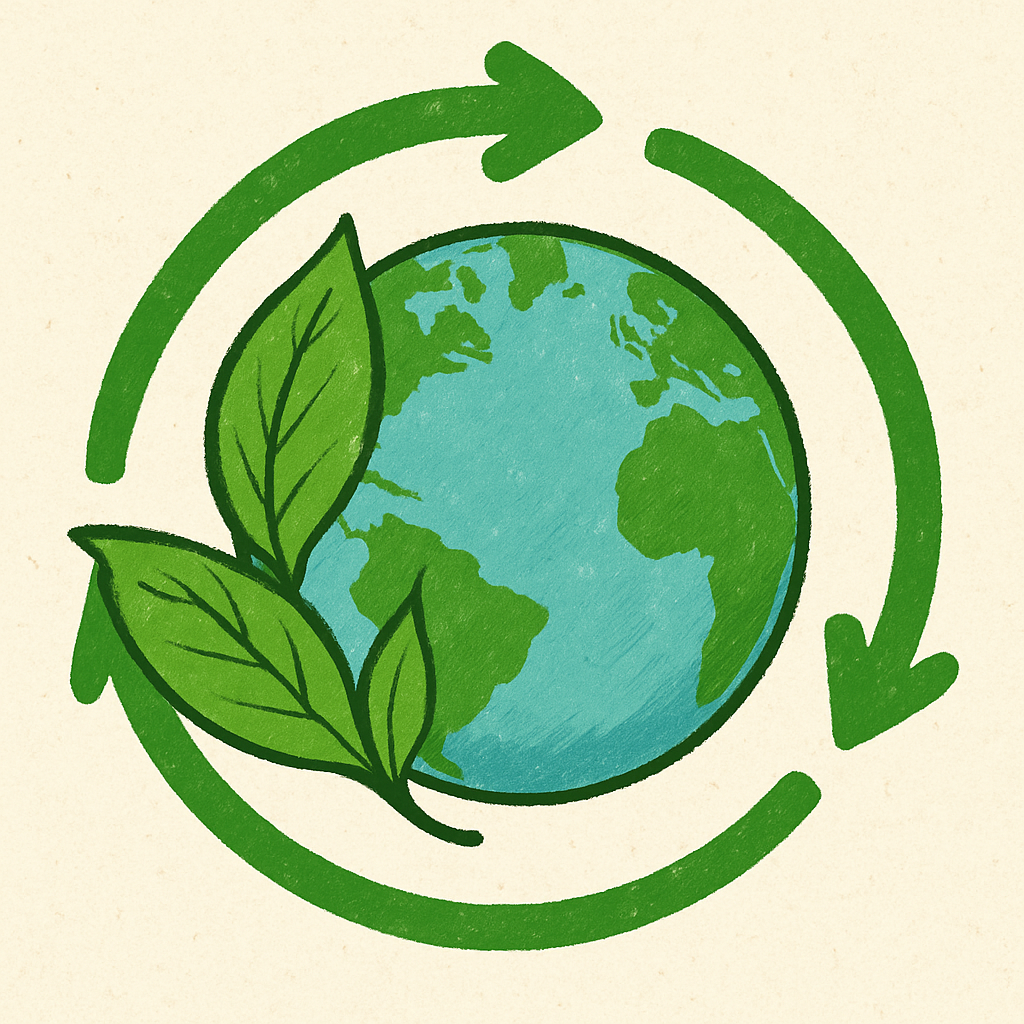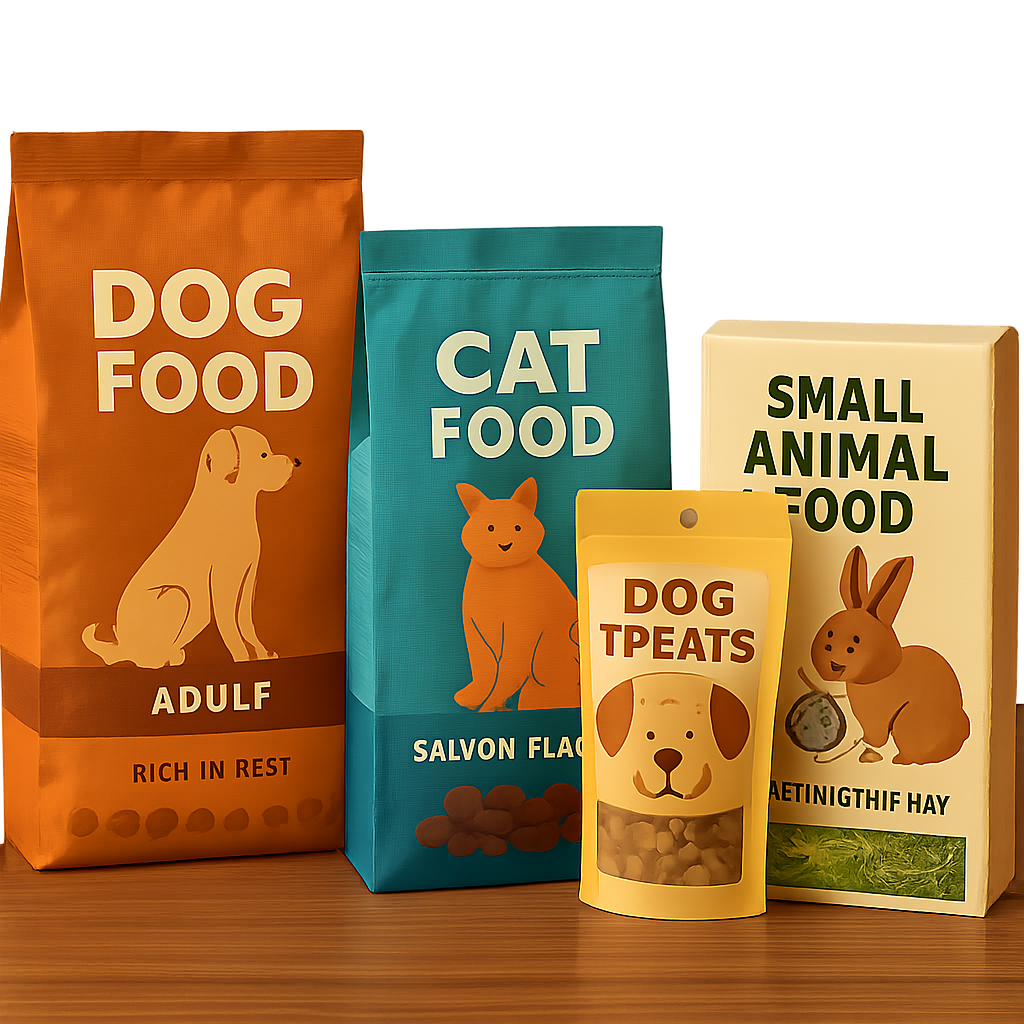 Packaging is more than just a container — it protects your product, tells your brand story, and can even influence a customer's decision to buy. Choosing the right material is crucial not only for product safety and shelf appeal but also for aligning with your brand values and sustainability goals.
Packaging is more than just a container — it protects your product, tells your brand story, and can even influence a customer's decision to buy. Choosing the right material is crucial not only for product safety and shelf appeal but also for aligning with your brand values and sustainability goals.
Before diving into specific recommendations, let’s explore the key materials—PE, PET, Kraft paper, and compostable films—and why they’re widely used in the packaging industry. At Anacotte Packaging, we help brands navigate these choices every day, offering tailored solutions based on product requirements, design needs, and market positioning.
Polyethylene (PE): Versatile and Cost-Effective
Polyethylene (PE) is one of the most widely used plastics in packaging. It's known for its durability, flexibility, and moisture resistance.

Pros
-
Durable: Excellent protection against environmental factors. Ideal for transportation and storage.
-
Flexible: Easily molded into various shapes and sizes—perfect for custom formats.
-
Cost-effective: Keeps production costs low, ideal for large or small-scale operations.
Cons
-
Environmental concerns: Not biodegradable; recycling is essential to reduce its footprint.
-
Limited printability: PE can be harder to print on compared to paper-based materials.
Best For: Inner linings, bulk food packaging, and brands prioritizing affordability and function.
Polyethylene Terephthalate (PET): Clarity and Strength
PET is often used for clear containers, pouches, and bottles. It offers excellent visibility and strong structural integrity.
Pros
-
Lightweight: Reduces shipping weight and costs.
-
Transparent: Allows consumers to see the product—great for building trust.
-
Recyclable: One of the most commonly recycled plastics.
Cons
-
Environmental impact: Still plastic; requires proper collection and recycling.
-
Brittle: Can crack under stress, requiring careful handling.
Best For: Snacks, dried fruits, health supplements—especially when product visibility matters.
Kraft Paper: Strong and Sustainable
Kraft paper is favored for its eco-friendly appeal and rugged aesthetic. Often laminated with PE or PLA to enhance barrier properties.

Pros
-
Eco-friendly: Biodegradable, recyclable, and made from renewable resources.
-
Tough: High tear resistance for heavier items.
-
Printability: Great for custom branding with a natural, rustic feel.
Cons
-
Water sensitivity: Needs a barrier layer to prevent moisture penetration.
-
Opaque: No product visibility unless combined with a window.
Best For: Coffee, tea, artisan foods, and eco-conscious brands seeking a natural look.
Compostable Materials: Sustainable and Forward-Thinking
Compostable films like PLA or PBAT are designed to break down into natural elements under the right conditions, making them a responsible choice for environmentally driven brands.

Pros
-
Eco-friendly: Fully compostable under industrial or home compost conditions.
-
Consumer appeal: Increasingly preferred by sustainability-minded shoppers.
-
Versatility: Available as films, laminates, and molded formats.
Cons
-
Higher cost: More expensive than conventional materials.
-
Limited infrastructure: Effective composting requires appropriate facilities.
Best For: Premium sustainable products, small-batch items, and zero-waste-focused brands.

How to Choose the Right Material for Your Brand
At Anacotte Packaging, we encourage our clients to assess the following when choosing materials:
-
Product Sensitivity
-
Moisture-sensitive? Consider PE or PET for excellent barrier performance.
-
Requires extended shelf life? Aluminum-laminated kraft or multilayer structures may be ideal.
-
-
Brand Values
-
Want to highlight sustainability? Opt for compostable or kraft-based options.
-
Premium product? Use materials with strong tactile or visual appeal.
-
-
Design Needs
-
Need vibrant printing? Kraft paper and laminated films offer excellent surface compatibility.
-
Require clear packaging? PET is your go-to for showcasing contents.
-
-
Budget & Volume
-
Tight budget? PE offers the best balance of cost and function.
-
Investing in long-term sustainability and consumer loyalty? Compostables may be worth it.
-
Quick Material Recommendation Guide
| Priority | Recommended Material |
|---|---|
| Durability + Low Cost | PE |
| Transparency + Recyclable | PET |
| Eco-Friendly + Printable | Kraft Paper |
| Compostable + Premium | PLA or PBAT-based Films |
Why Work with Anacotte Packaging?
With over 20 years of experience in flexible packaging, Anacotte Packaging helps brands across industries—from pet food to specialty foods—choose materials that balance performance, sustainability, and design.
We offer:
-
Custom bag formats: stand-up pouches, flat bottom bags, quad seal, and more
-
Material flexibility: from conventional plastics to certified compostable films
-
Low MOQ options for small batches
-
Global logistics and fast turnaround
-
Expert guidance for both startups and established brands
Whether you're launching a new product or rethinking your packaging strategy, our team is here to make material selection easy, efficient, and aligned with your goals.
Conclusion: Make Your Packaging Count
Your packaging does more than just protect your product—it communicates your values, attracts your ideal customer, and sets you apart from the competition. By understanding the pros and cons of PE, PET, Kraft, and compostable materials, and aligning them with your brand identity, you can make packaging a true competitive advantage.
Need help choosing the right packaging solution?
Talk to Anacotte Packaging today — we’re here to bring your packaging vision to life.






Leave a comment
This site is protected by hCaptcha and the hCaptcha Privacy Policy and Terms of Service apply.